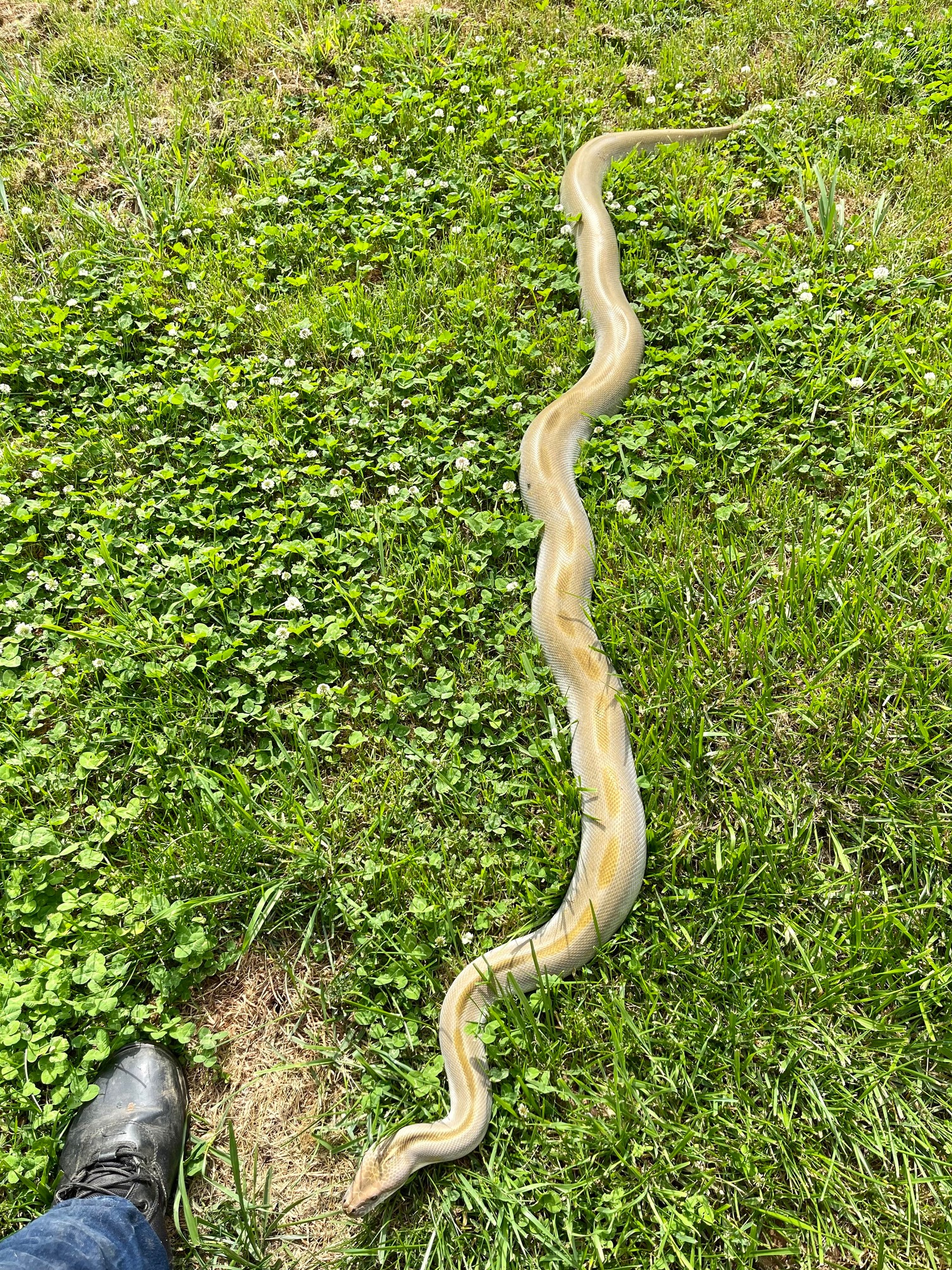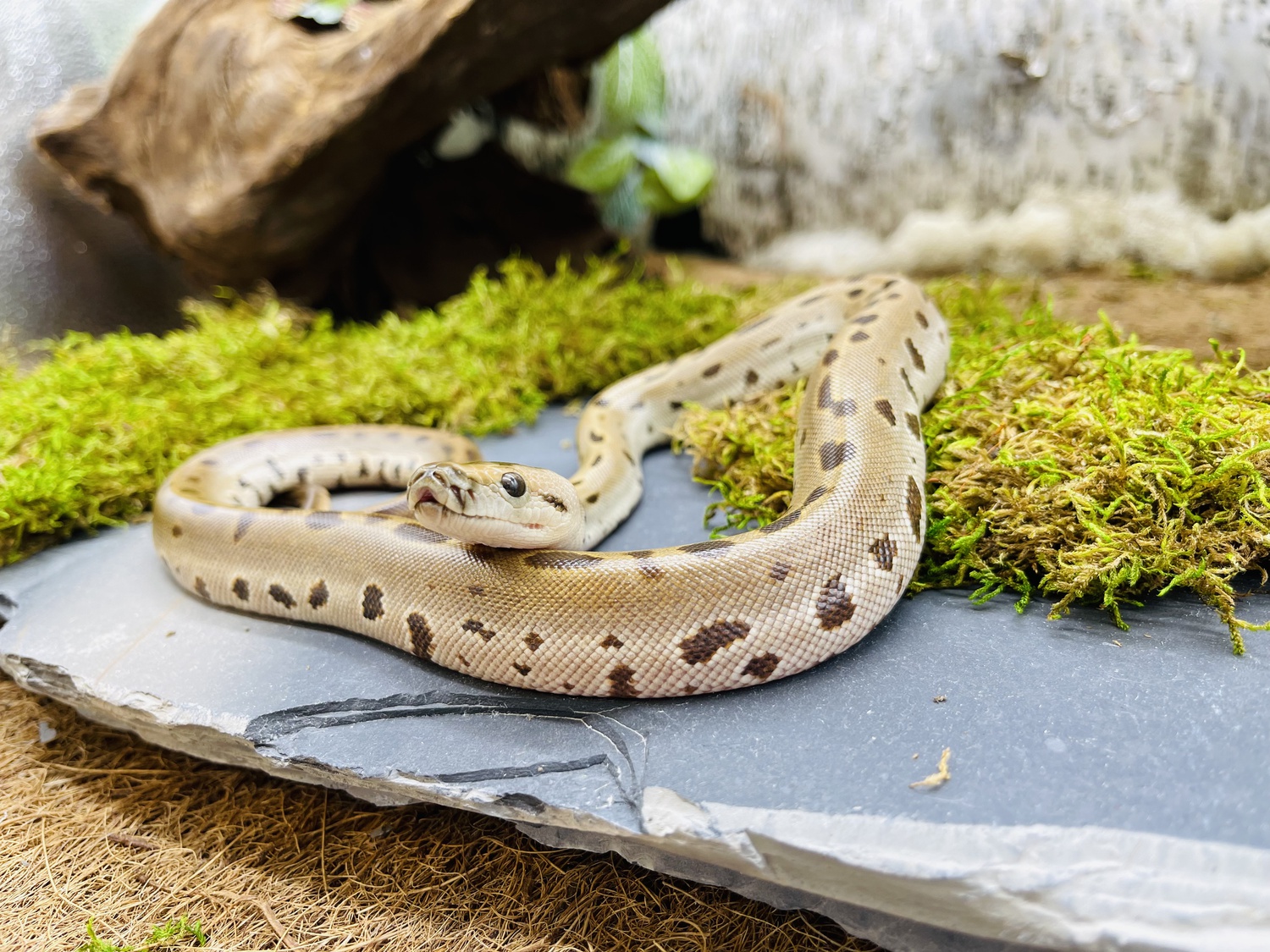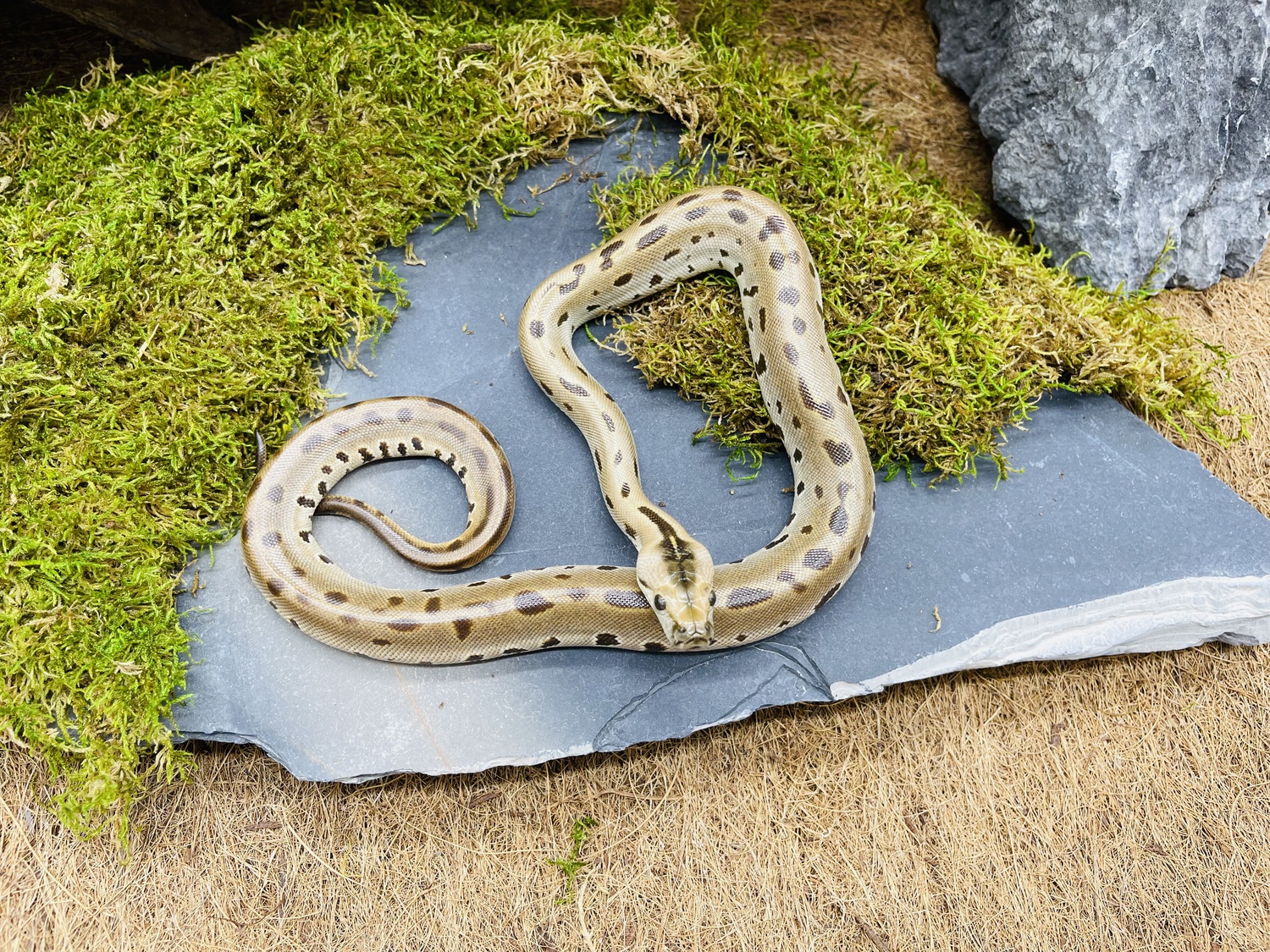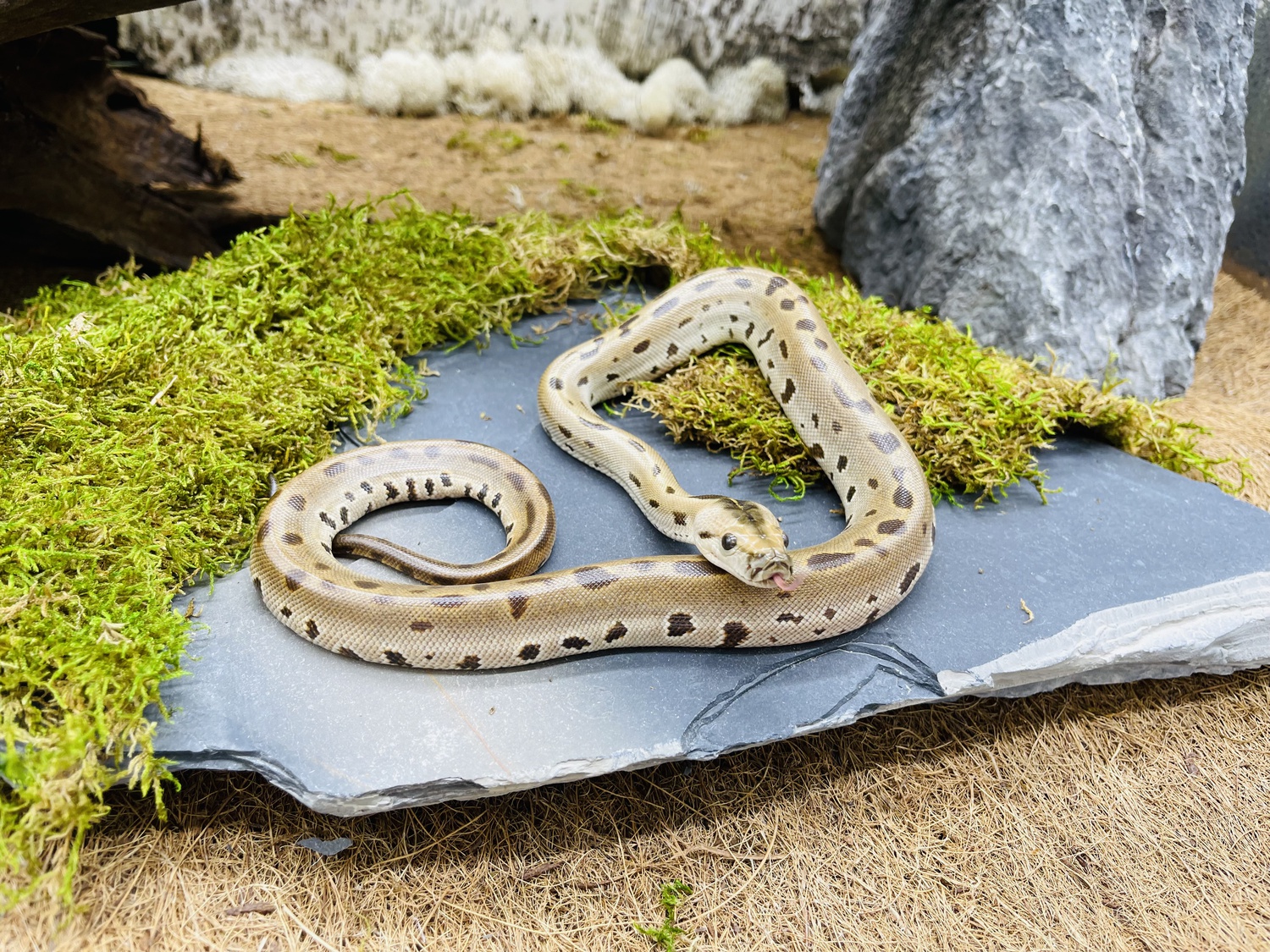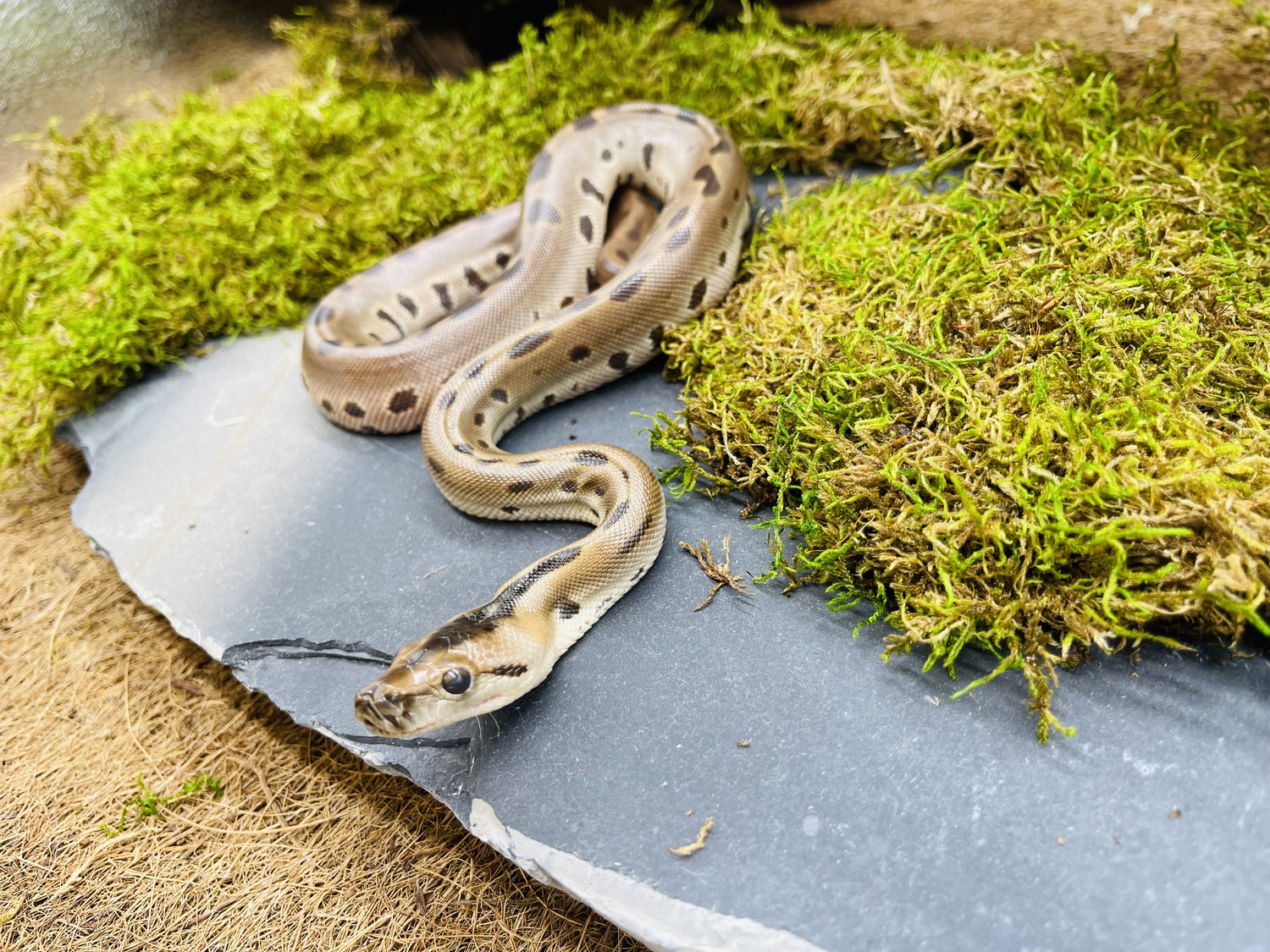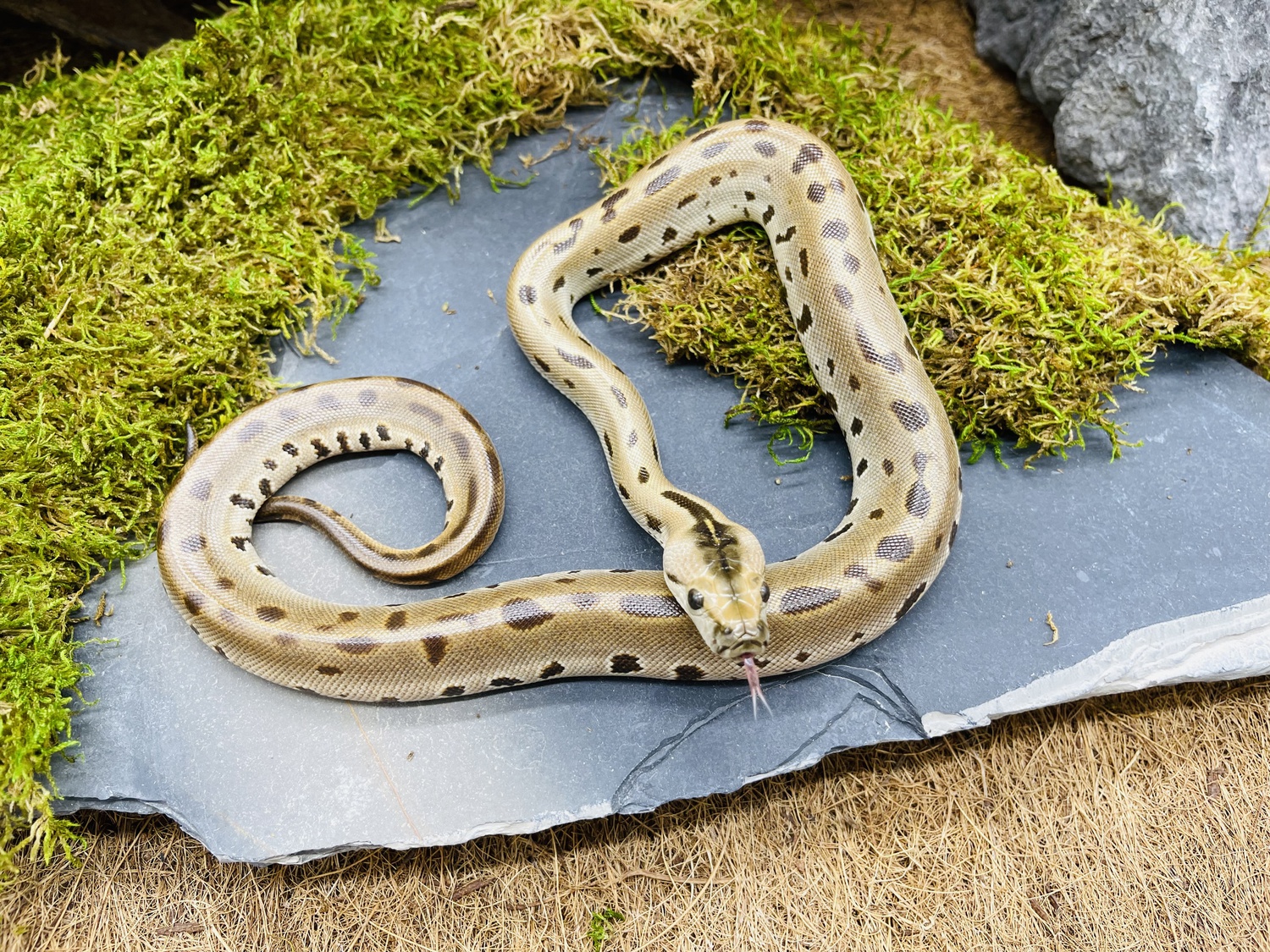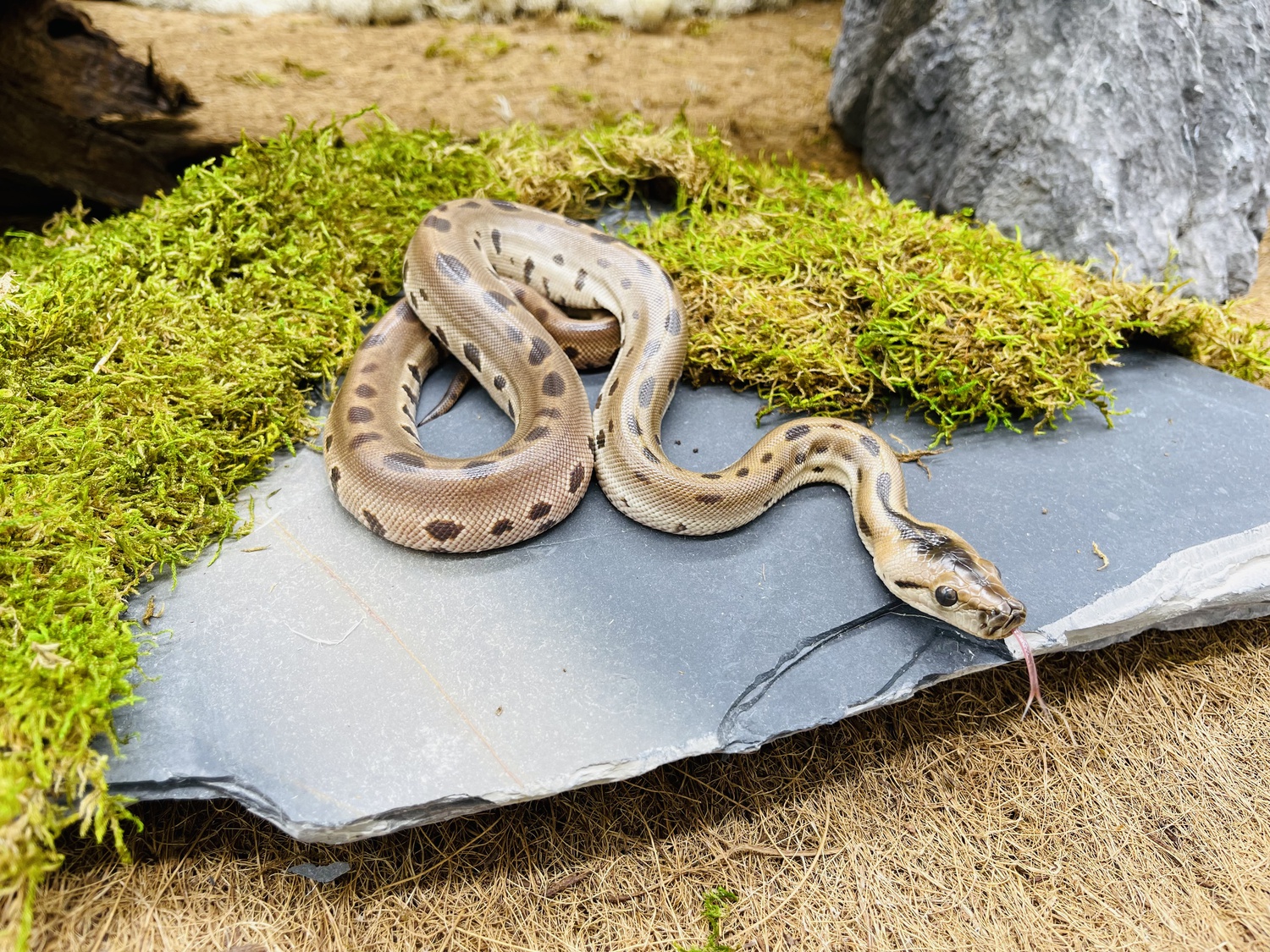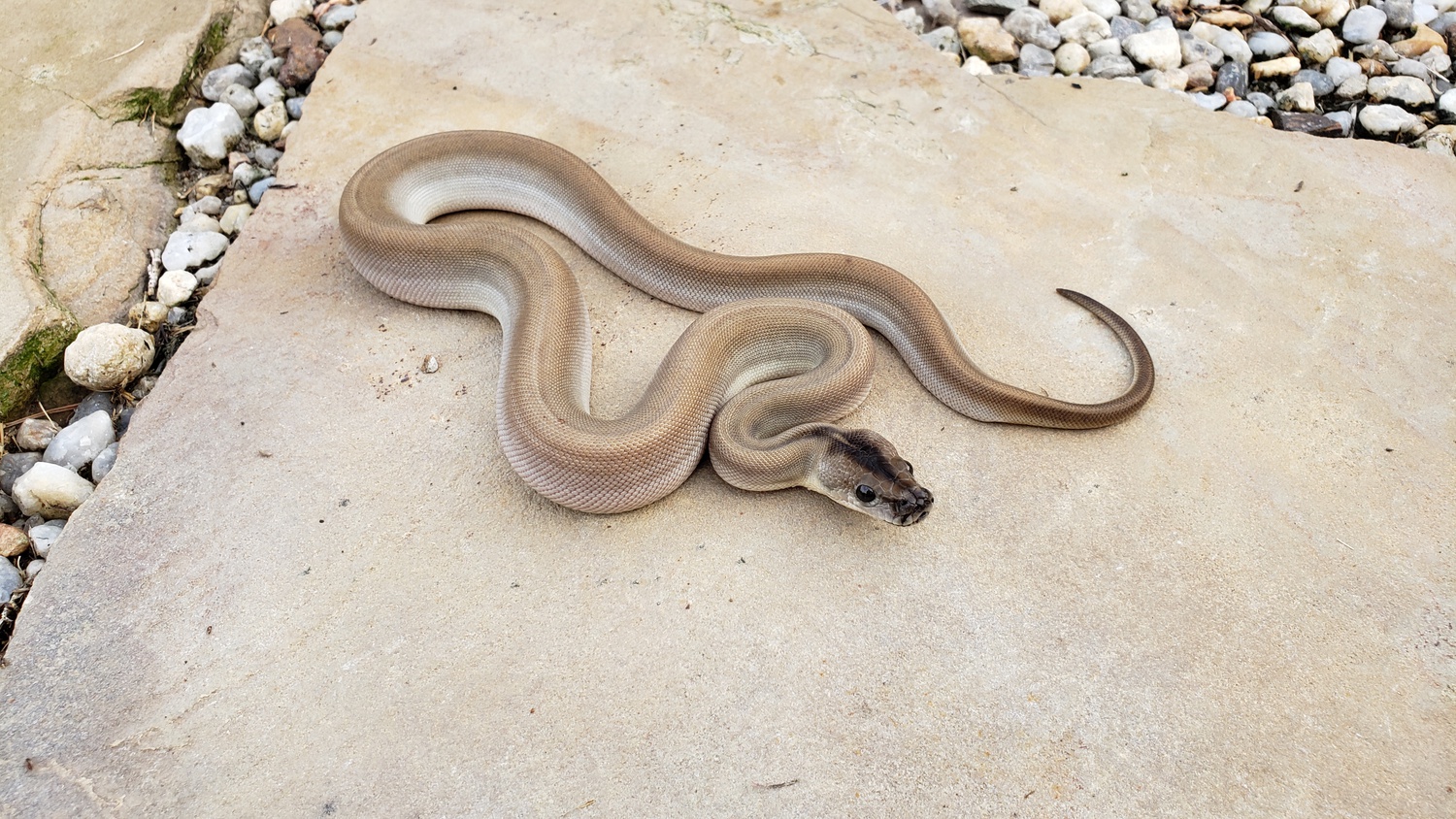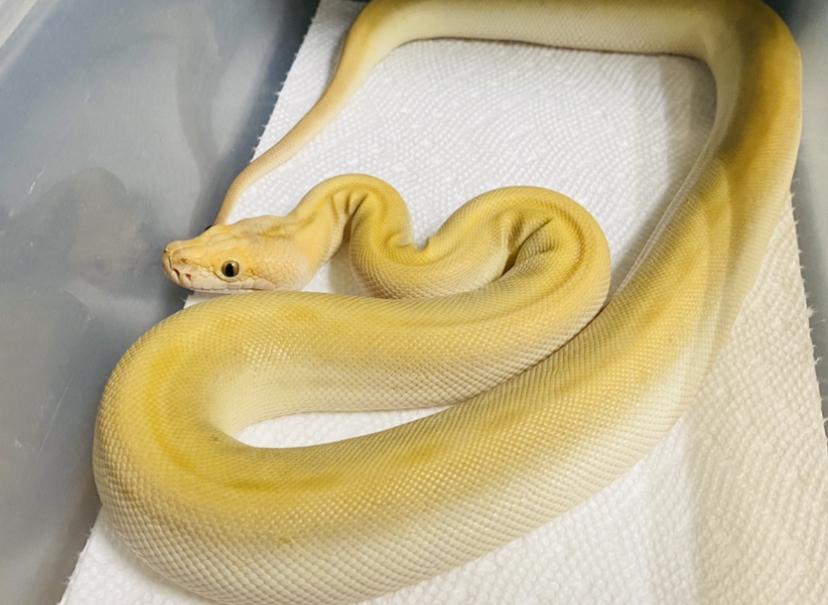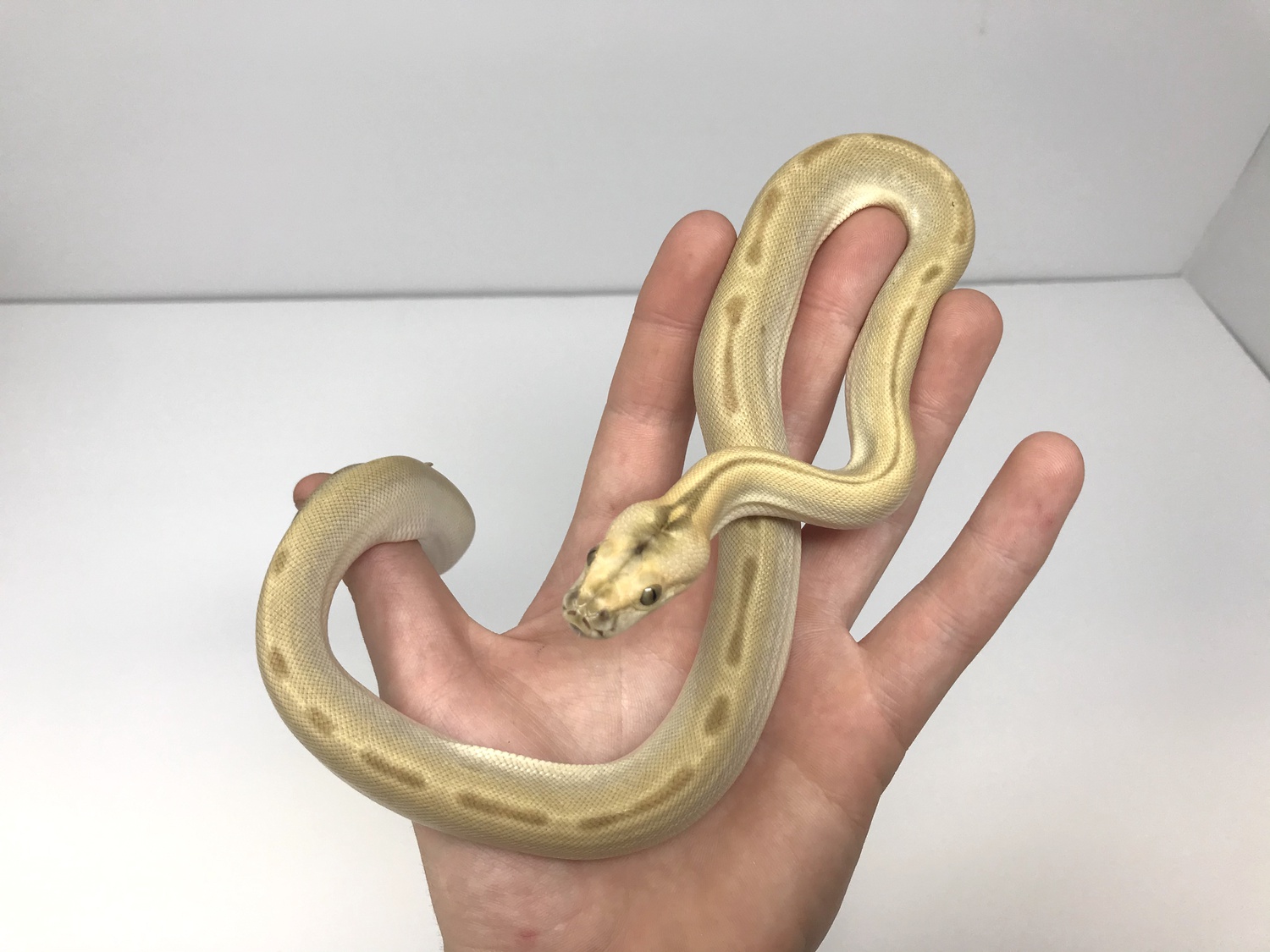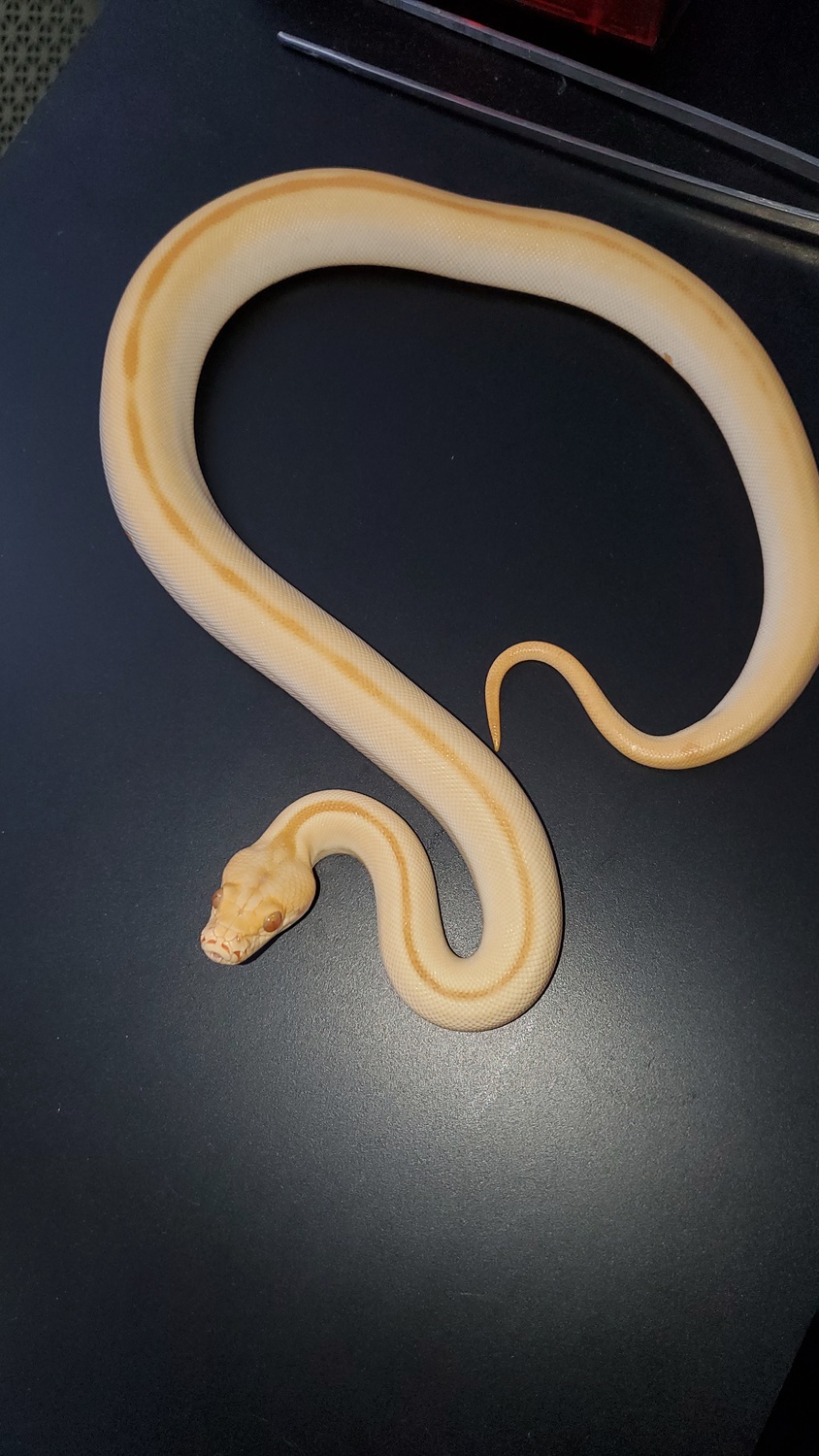Patternless
Type: Recessive
First Produced By: Tom Weidner
Aliases: Green
Issues: N/A
First Produced In: 1987
Availability: Common
Last Updated: 2021-12-09
Do you have any suggestions or corrections for this article?
Click here to contribute feedback
About
Patternless is a recessive mutation founded by Tom Weidner in 1987
History
In 1987, the second python mutation was produced in captivity. Tom Weidner of Des Moines, Iowa, purchased an olive green, patternless Burmese python from Western Zoological Supply in West Covina, California, in 1974. The $650 selling price was, at the time, very high. The snake - a male - was not a motivated breeder. It bred only once, producing offspring in 1984, and died shortly thereafter. These heterozygous snakes produced their first offspring in 1987. A percentage of these snakes exhibited the new trait.
The green Burmese and the albino were bred together, and because both mutations are recessive, the babies looked like the normal, wild-type snake. When these snakes produced offspring, by appearance, four types hatched. The largest percentage of the babies looked normal, there were equal percentages of green and albino snakes, and a very few snakes were albino with the green pattern. The laws of probability dictate that only one in 16 hatchlings will show both traits. My first breeding of the double recessive snakes produced no “green” albinos from 29 eggs (it’s the same problem that plagues the local weatherman). Later that year, Mark Bell, now of Naples, Florida, hatched the first of these new snakes. The snake was light orange fading to almost white on the sides, with darker orange spots centered on the dorsal midline. The snake becomes yellow and the pattern fades as it grows.
Appearance
Body
The snake has been named “Green” or “Patternless” after the original adult, and these names are accurately descriptive of the adult animals. The babies, however, are neither green nor patternless. Hatchlings of this type are khaki-colored, fading to silver on the sides, with a broken line of chocolate brown spots down the center of the back and sometimes scattered randomly along the sides. With age and size, the snakes darken to an olive green, and the spots fade and become less and less apparent.
Proven Lines
No known proven lines
Related Traits
No known related traits
